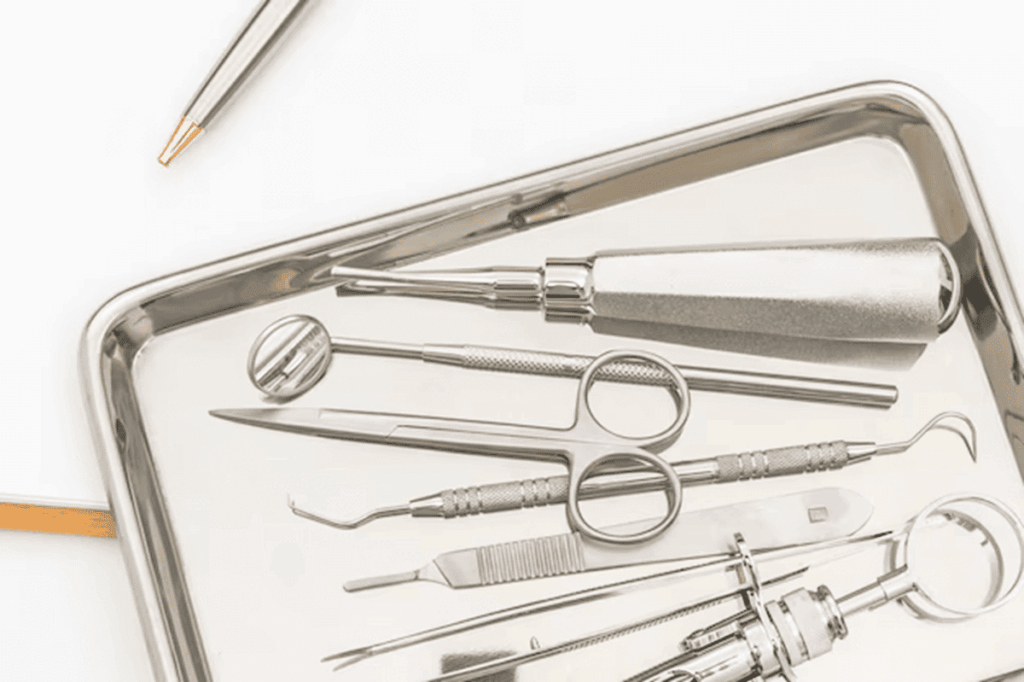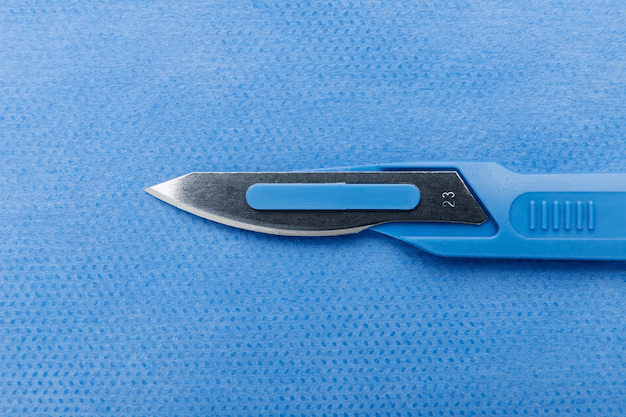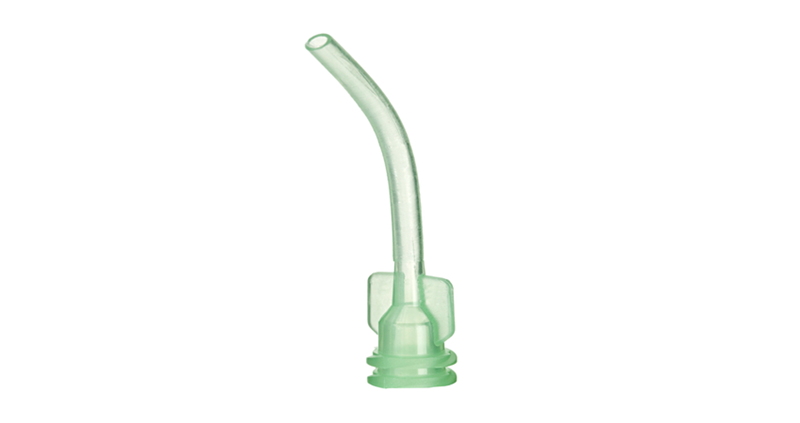Both simple and complicated oral procedures rely on dental surgical instruments for precision, efficiency, and safety to the patient. The choice of the right instruments, aside from functionality affects the treatment outcome and quality of patient care.
The following post will outline six basic dental surgical tools that every practitioner should possess. These instruments are essential for many procedures due to their flexibility, strength, and ergonomics. These will help you in providing reliable, high-quality service, be it for starting your facility or renovating an existing setup.

6 Most Versatile Dental Surgical Instruments for Every Procedure
Versatility is crucial for dental surgical instruments, as it ensures efficiency, safety, and optimal outcomes across various procedures. Below are 6 essential instruments every oral surgeon or dentist should have in their toolkit.
1. Scalpel and Surgical Blades

It is one of the most crucial dental surgical instruments used for soft tissue in making clean cuts and is very precise. It’s a must during surgery on the gums, biopsies, and tooth extraction. The sharp blade ensures minimal tissue trauma, enabling quick healing with fewer chances of complication.
Key Features
- Sharp and precise: It yields clean incisions with a minimum of damage to the surrounding tissues.
- Sizes: Multiple sizes; for example, #10 and #15 blades accommodate uses from general cuts to detailed cuts.
- Ergonomic Handle: This handle provides a sure grip and reduces hand fatigue in extended procedures.
Technical Specifications
- Material: High-quality stainless steel for durability.
- Sizes of Blade: Common blade sizes are #10 general use and #15 for finer cuts.
- Types of Handles: The handles come in straight, curved, or angled styles to suit various types of surgical procedures.
- Price Range: $50–$150 per set, depending on the brand and blade type.
2. Bone Chisels
Bone chisels are among the main dental surgical tools a dentist employs to complete operations like implant insertion, alveoloplasty, and tooth extractions when bone must be cut or reshaped. These tools allow higher precision in the removal of the bone with less injury to tissues surrounding it, enabling improved surgical outcomes and hastening the patient’s recovery process.
Key Features
- High-Precision Cutting: This equipment is meant to retrieve bones with the least feasible forces to preserve surrounding tissues for rapid recuperation.
- Available in curved, angled, or flat designs to fit diverse bone-shaping demands.
- Sturdy and Dependable: Manufactured from hardened stainless steel to resist the demands of bone cutting without losing edge sharpness.
Technical Details
- Material: high-quality stainless steel for durability and sharpness.
- Blade Shape: angled for more specialized work, curved for general cutting, or flat.
- Size Variations: From small chisels to do very delicate jobs up to huge ones that may remove stubborn bones.
- $100-$250 each item, depending on the brand and size.
3. Dental Elevators
Dental elevators are the dental surgical instruments used for loosening teeth from the surrounding tissues in extractions. These Dental Instruments are quite effective in cases of tooth extractions that have fragile roots or highly decayed conditions, where application of forceps may not be effective.
Key Features:
- Precise Leverage: In order to dislodge teeth from their sockets by using controlled forces, reducing damage to surrounding tissues and, therefore, accelerating the healing process.
- Ergonomic Handles: Non-slip, comfortable handles provide better control and reduce hand fatigue with long procedures.
- Versatile sizes are available for straight, curved, or root-tip designs to handle every kind of extraction and/or root removal.
Technical Specifications:
- Material: Made from high-quality stainless steel for strength and resistance to corrosion.
- Length: Typically ranges from 6 to 8 inches, depending on the extraction’s complexity.
- Tip Design: Offers pointed or flat tips to accommodate different surgical needs.
- Price Range: $50–$150 per piece, depending on the brand, size, and quality.
Dental elevators are indispensable for precision and efficiency in tooth extractions, making them a must-have in every dental surgical toolkit.
4. Extraction Forceps
The extraction forcep is one of the dental surgery tools that are mostly used to remove teeth carefully and precisely from their sockets. By design, it enables dentists to apply controlled force with minimum trauma to the surrounding tissues and bone, maintaining a good grip on the tooth.
Key features:
- Different Designs: Special forceps are designed for upper and lower teeth and even for some tooth types, such as wisdom teeth and molars.
- Precision Grip: During the extraction, curved, serrated jaws providing a solid grip will enhance control and reduce slippage.
- Ergonomic Handles: The comfortable, non-slip handles minimize hand fatigue, especially in longer procedures.
Technical Specifications:
- Material: The premium stainless steel used is long-lasting and resistant to corrosion.
- Handle Type: It is made in both straight and angled forms for all teeth that are hard to reach. According to design and expertise level, a set ranges between $100 and $350.
Extraction forceps represent a group of dental surgical instruments intended to safely and efficiently remove teeth. Due to their precision and versatility, they are among the very basic kits a dental surgeon should possess to carry out both simple and complicated extractions.
5. Surgical Suction Tips: Keep Your Procedure Clean and Clear

The extraction forcep is one of the dental surgery tools that are mostly used to remove teeth carefully and precisely from their sockets. By design, it enables dentists to apply controlled force with minimum trauma to the surrounding tissues and bone, maintaining a good grip on the tooth.
Features include:
- Different Designs: Special forceps are designed for upper and lower teeth, and even for some tooth types such as wisdom teeth and molars.
- Precision Grip: During the extraction, curved, serrated jaws providing a solid grip will enhance control and reduce slippage.
- Ergonomic Handles: The comfortable, non-slip handles minimize hand fatigue, especially in longer procedures.
Technical Specifications:
- Material: The premium stainless steel used is long-lasting and resistant to corrosion.
- Handle Type: It is made in both straight and angled forms for all teeth that are hard to reach. According to design and expertise level, a set ranges between $100 and $350.
Extraction forceps represent a group of dental surgical instruments intended to safely and efficiently remove teeth. Due to their precision and versatility, they are among the very basic kits a dental surgeon should possess to carry out both simple and complicated extractions.
6. Retractors: Improve Access and Visibility During Surgery
Retractors are one of the most important dental surgical instruments that keep soft tissues such as lips, cheeks, or gingiva aside during dental surgeries. They improve the accessibility and visibility of the surgical site, allowing dentists to do the work in a better way with more safety and minimize trauma to tissues. They are frequently used during tooth extractions, periodontal surgeries, and implant placements.
Key Features
- Improved Visibility: The soft tissues are retracted, hence giving a proper view of the area in which one is working.
- Ergonomic Shape: Lightweight and comfortable for the hand, thus preventing exhaustion of the hand during long processes.
- Shapes and Sizes: These come in different sizes with different tip designs to suit various procedures and anatomic areas.
Technical Specification
- Material: robust stainless steel; some models with the addition of a rubber grip on the handle.
- Size: Usually varies between 4 and 7 inches, based on application. The tip is curvilinear or angled, enhancing the surgical site.
- The prices vary between $15 and $100 depending on the design and material used.
Hence, these instruments will provide both visibility and ease of performance, making successful dental surgeries possible.
Key Features of Versatile Dental Surgical Instruments
Versatility is essential for dental surgical instruments, as it allows the same tools to be used across various procedures, improving efficiency and reducing the need for specialized instruments.
Multi-purpose Usage: Instruments like forceps and scalpels can handle multiple tasks, from simple extractions to complex surgeries, saving space and reducing costs.
Durability: High-quality materials, such as stainless steel, ensure resistance to wear, corrosion, and repeated sterilization, minimizing replacements and maintaining reliability over time.
Ease of Sterilization: Smooth surfaces make these instruments easy to clean and disinfect, ensuring patient safety and meeting hygiene standards in high-sterility environments.
Precision and Control: Versatile instruments provide accurate control, making intricate procedures like extractions and soft tissue work more efficient and effective.
Ergonomic Design: Well-designed tools enhance grip, reduce hand fatigue, and improve maneuverability during lengthy surgeries, ensuring better outcomes for both dentists and patients.
Investing in adaptable, durable instruments streamlines workflows, improves care quality, and ensures dentists are prepared for any procedure.
FAQs
1. What are the most essential dental surgical instruments every dentist should have?
The most essential tools include scalpels, forceps, dental elevators, bone chisels, hemostats, and retractors. These instruments are versatile, reliable, and crucial for various dental surgeries, from extractions to soft tissue procedures.
2. How can I identify the most versatile dental surgical instruments for oral procedures?
Look for instruments that are multi-purpose, durable, easy to sterilize, and suitable for a variety of dental procedures. Instruments with high-quality materials and a reputation for reliability are often a good indicator of versatility.
3. How often should dental surgical instruments be sterilized?
Dental surgical instruments should be sterilized after every use to prevent cross-contamination and ensure patient safety. Follow your local health regulations and your dental practice’s protocols for sterilization practices.
4. Are high-quality dental surgical instruments worth the investment?
Yes, investing in high-quality dental surgical instruments ensures durability, precision, and reliability. Good-quality instruments can improve the efficiency of dental procedures and provide better results for patients in the long run.
5. Can I find affordable yet reliable dental surgical instruments?
Yes, there are affordable options that offer good quality and performance. Research trusted brands and check reviews to find cost-effective dental instruments that meet your needs without compromising on quality.
Summary
Having the right dental surgical instruments is essential for making procedures smoother and more efficient. The 6 versatile tools we discussed can enhance your workflow and improve patient care by ensuring precision and reliability across different surgeries.
Quality matters when selecting instruments, and Aidite offers a range of dependable, high-performance dental tools designed to support your practice. Their products help streamline your work, making complex procedures easier and more effective. Explore Aidite’s selection today to find the right tools that fit your needs and elevate your practice.



